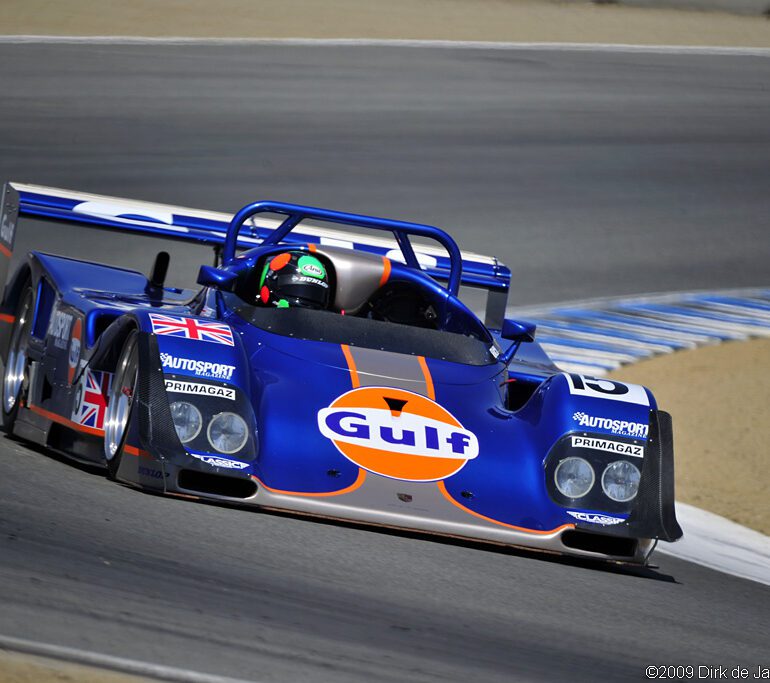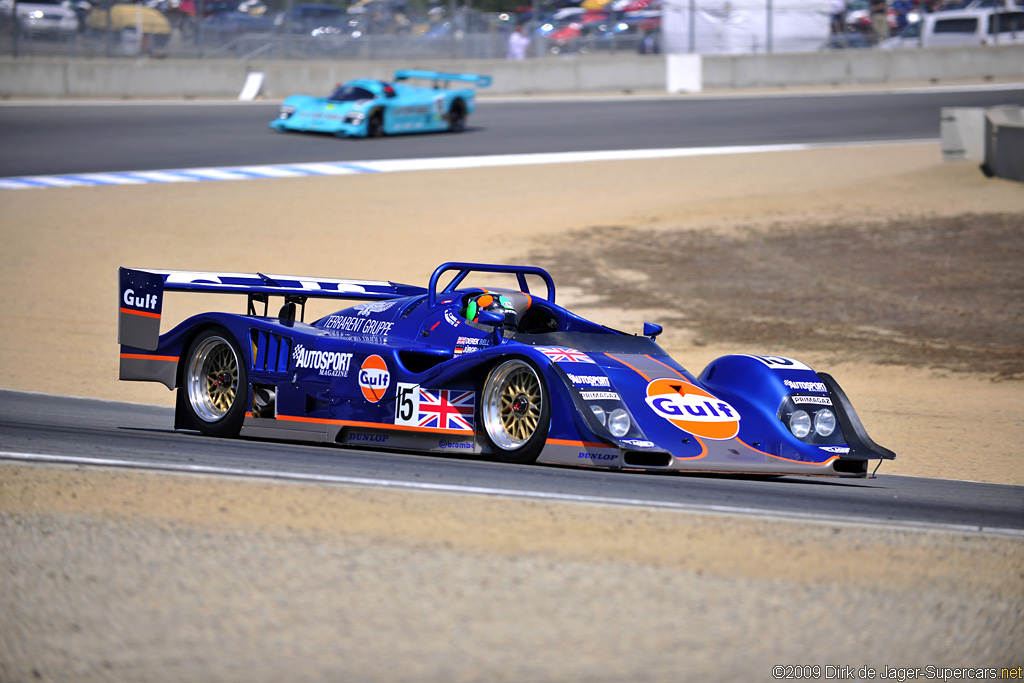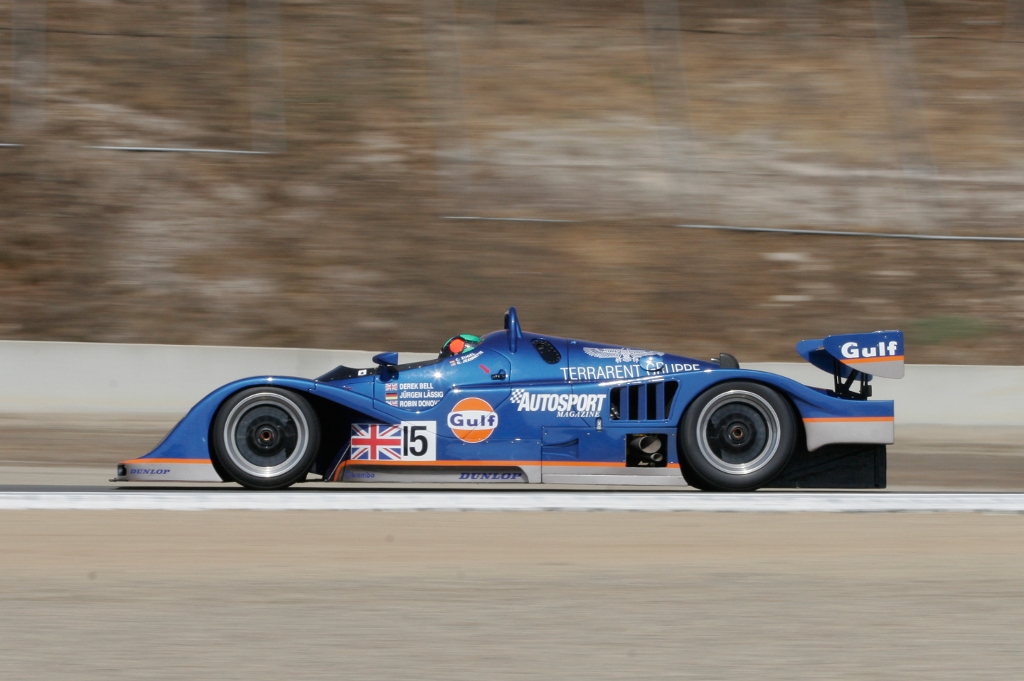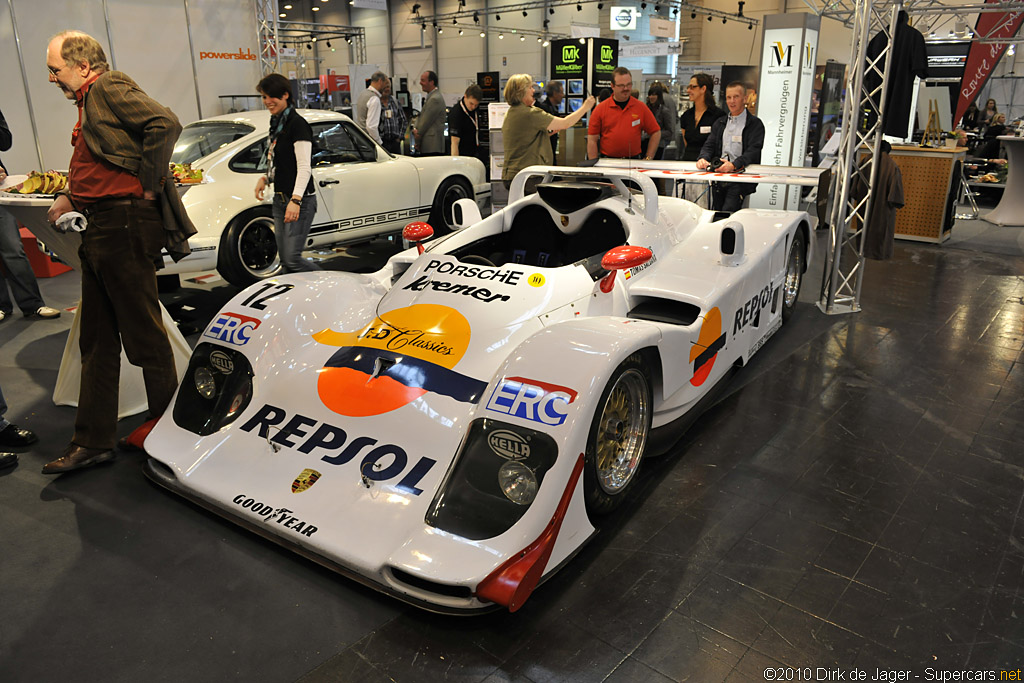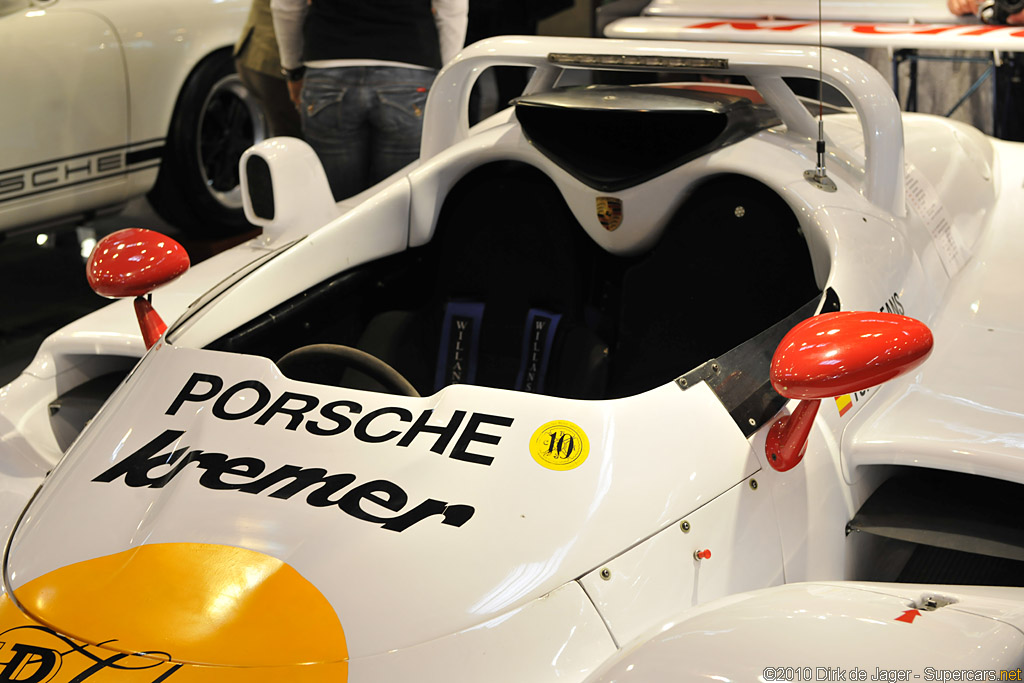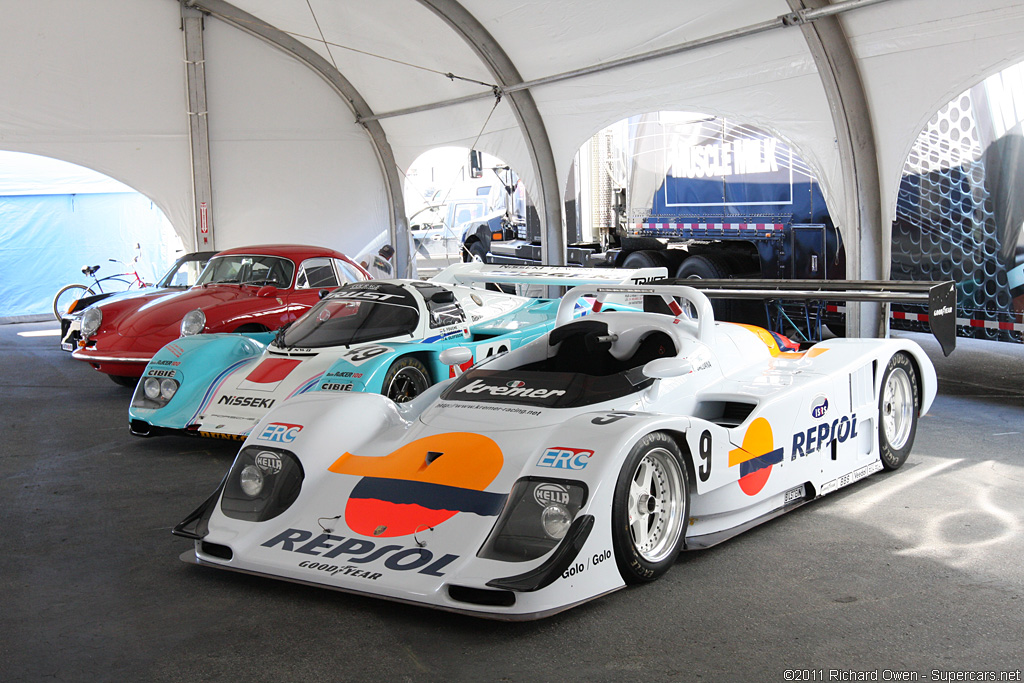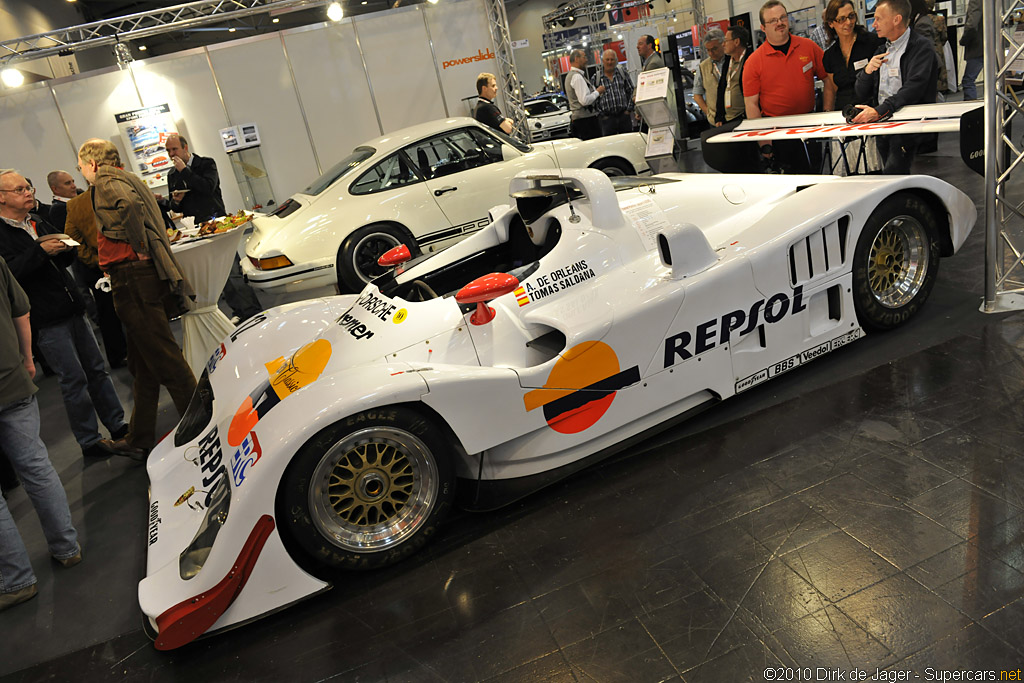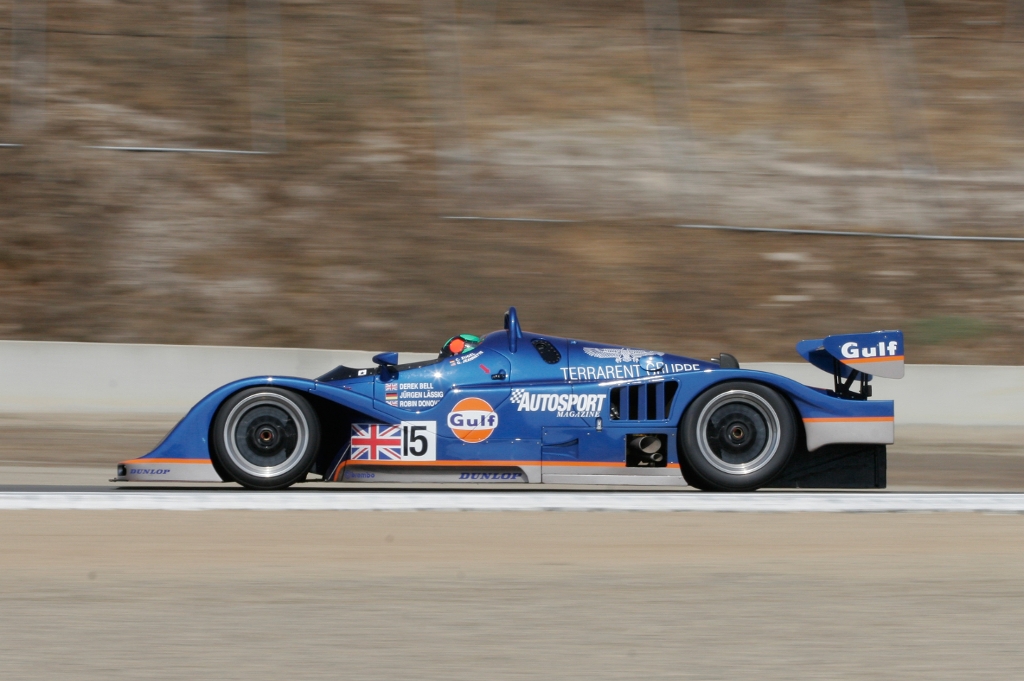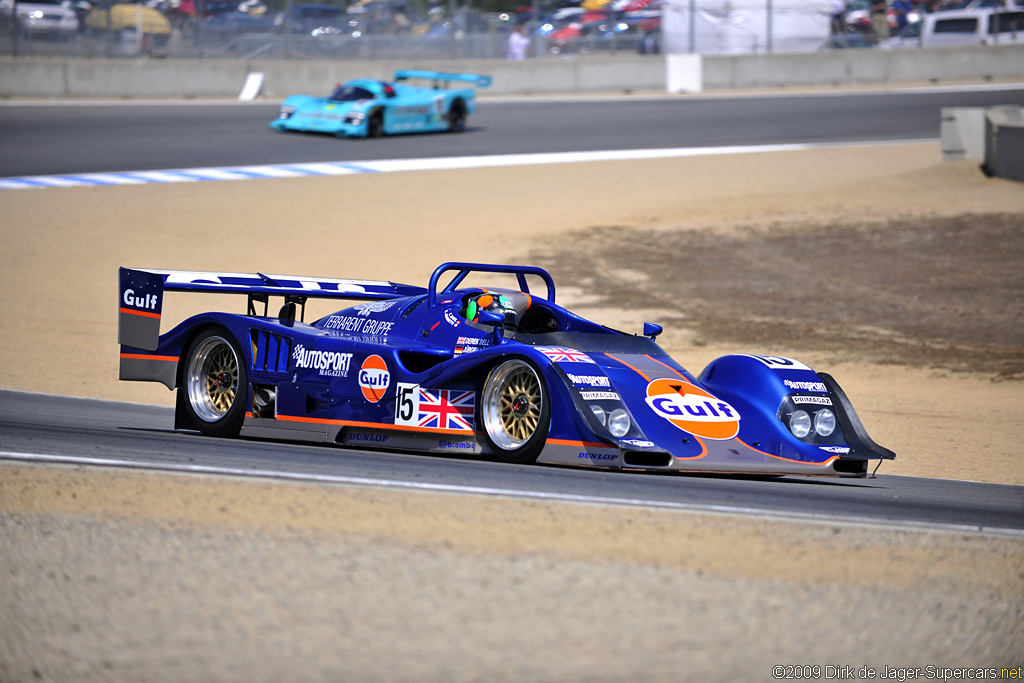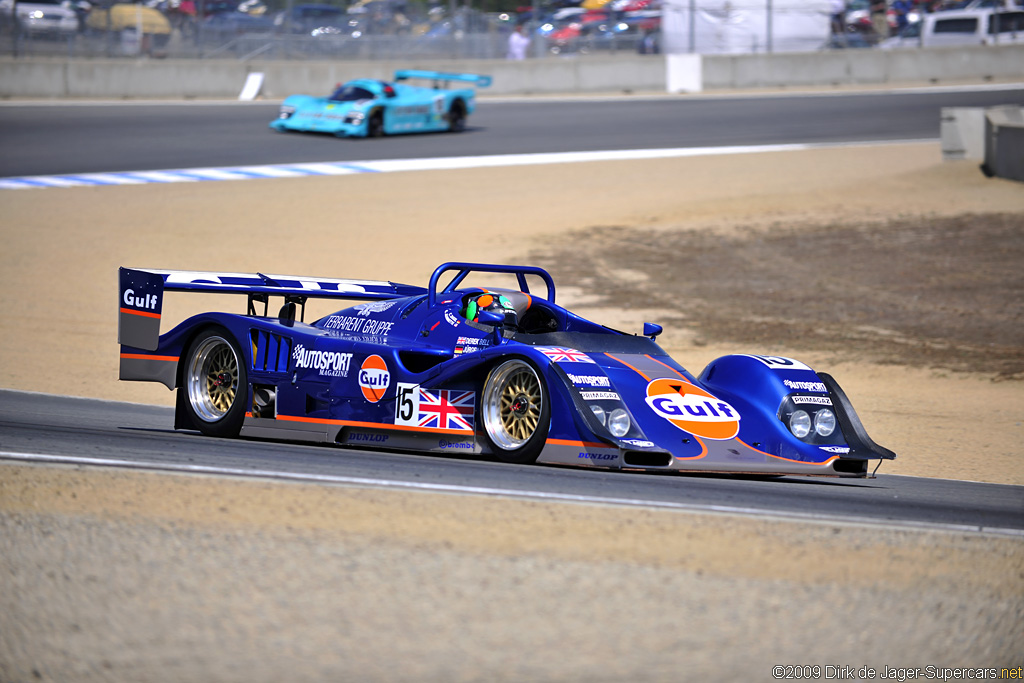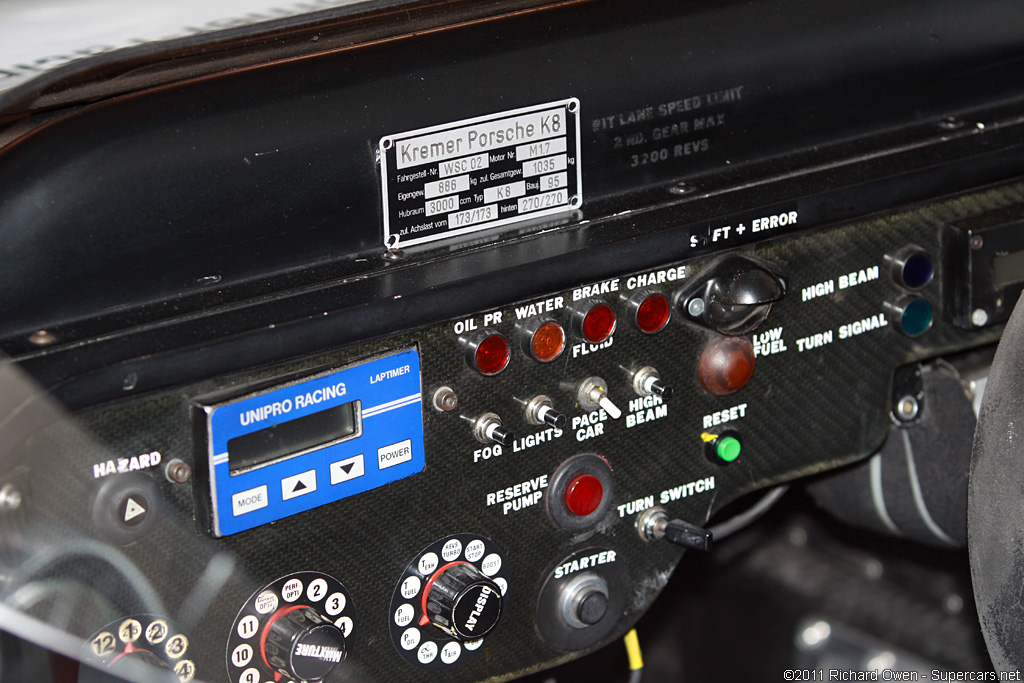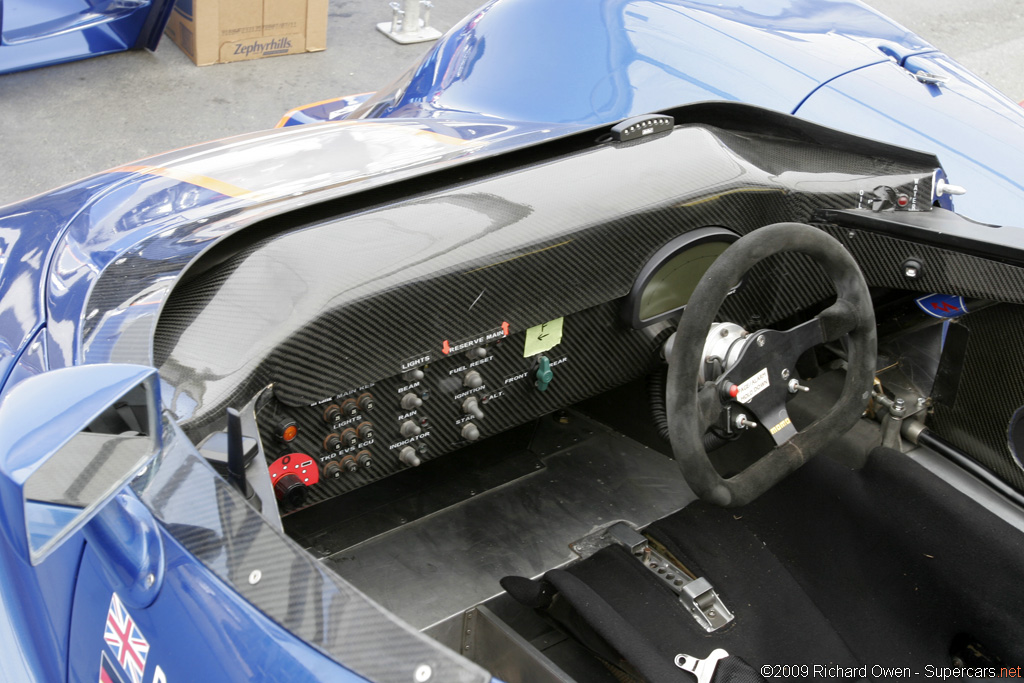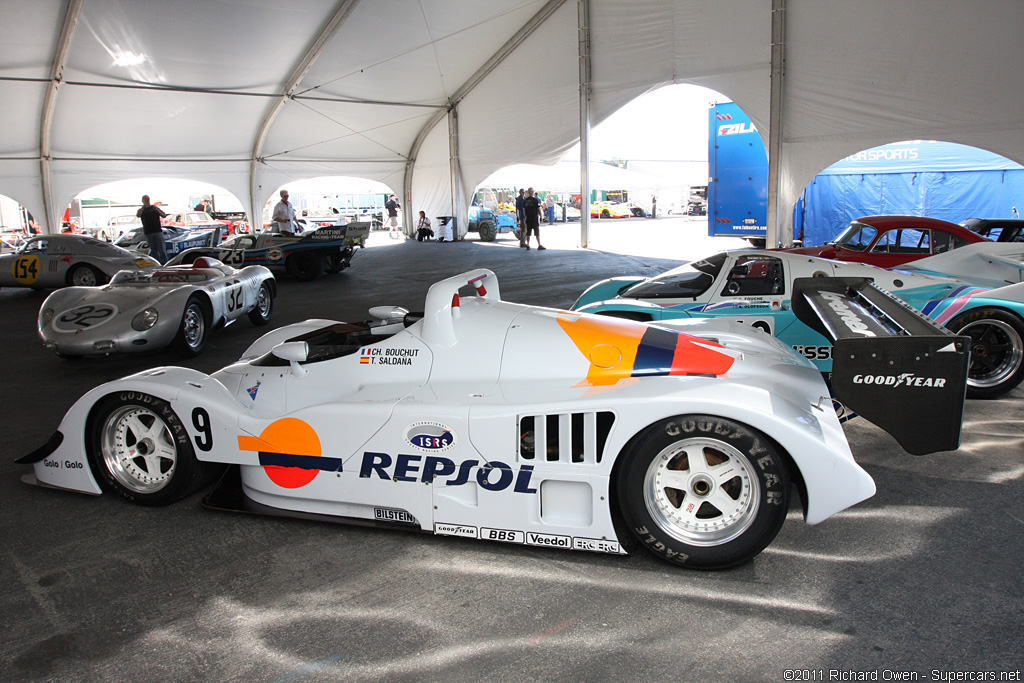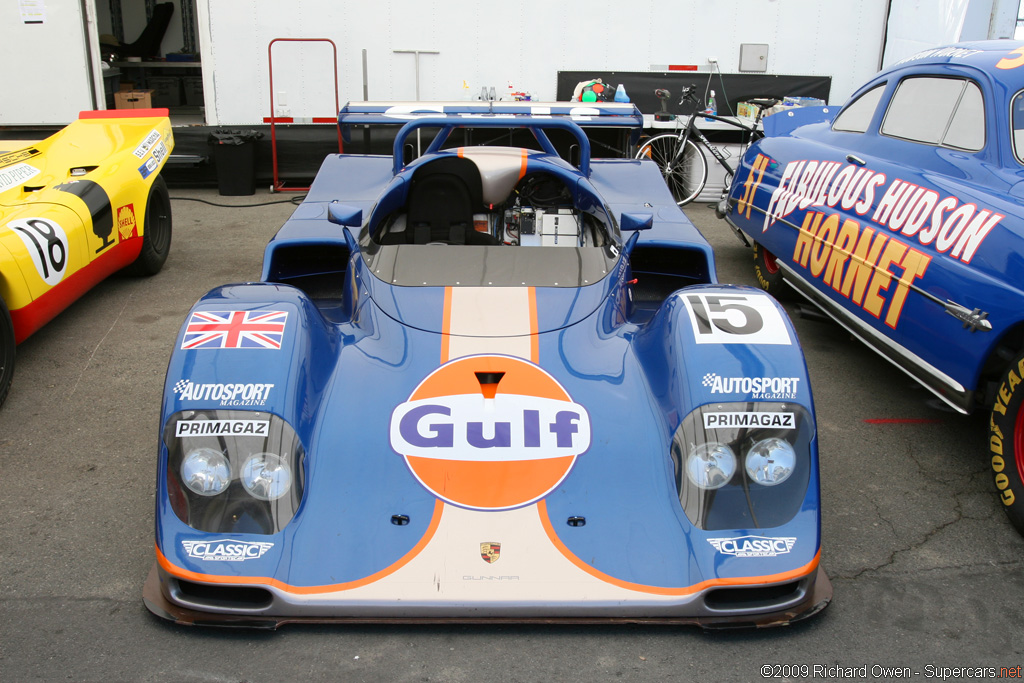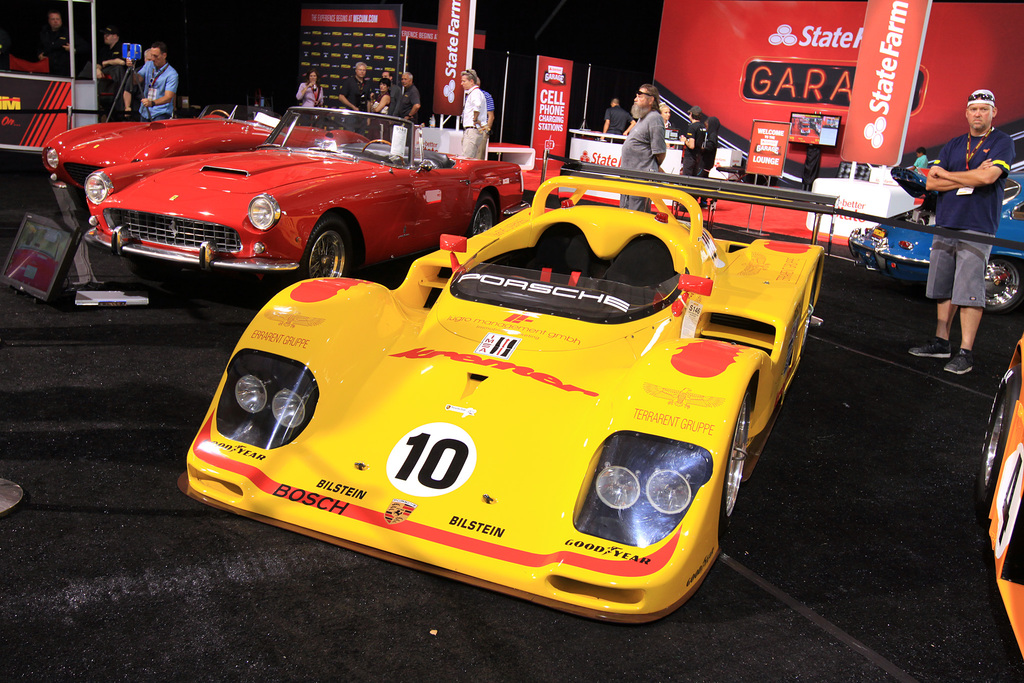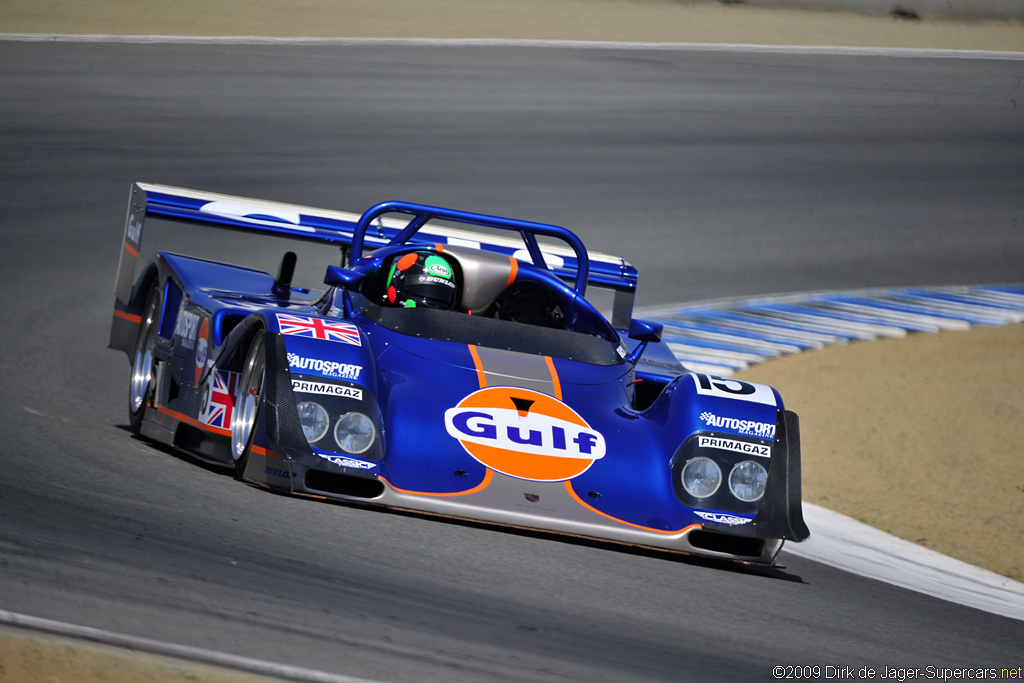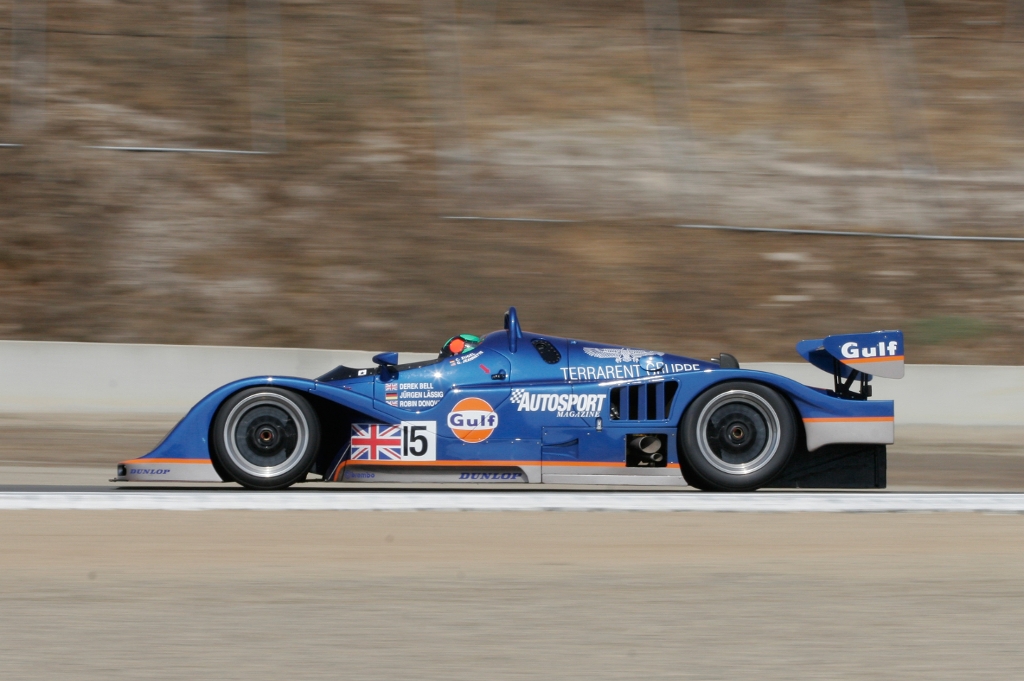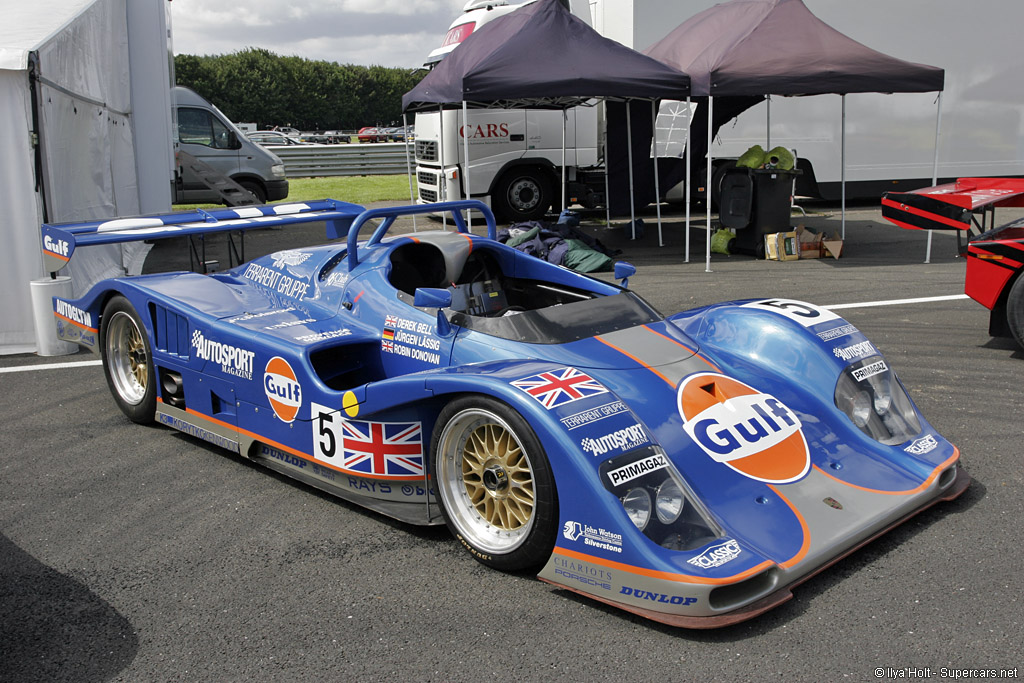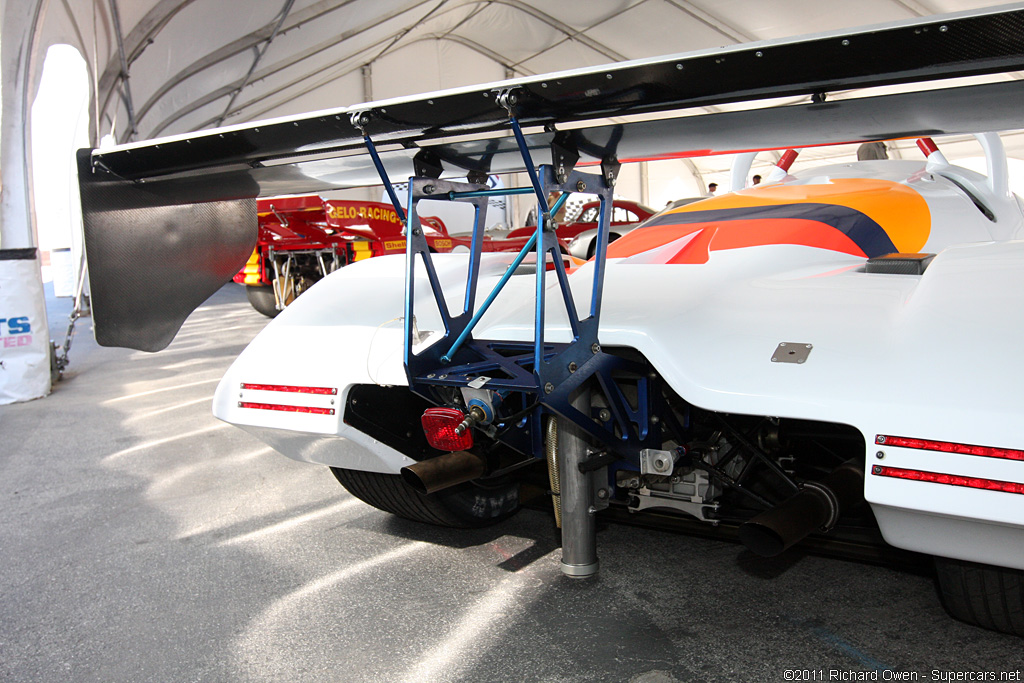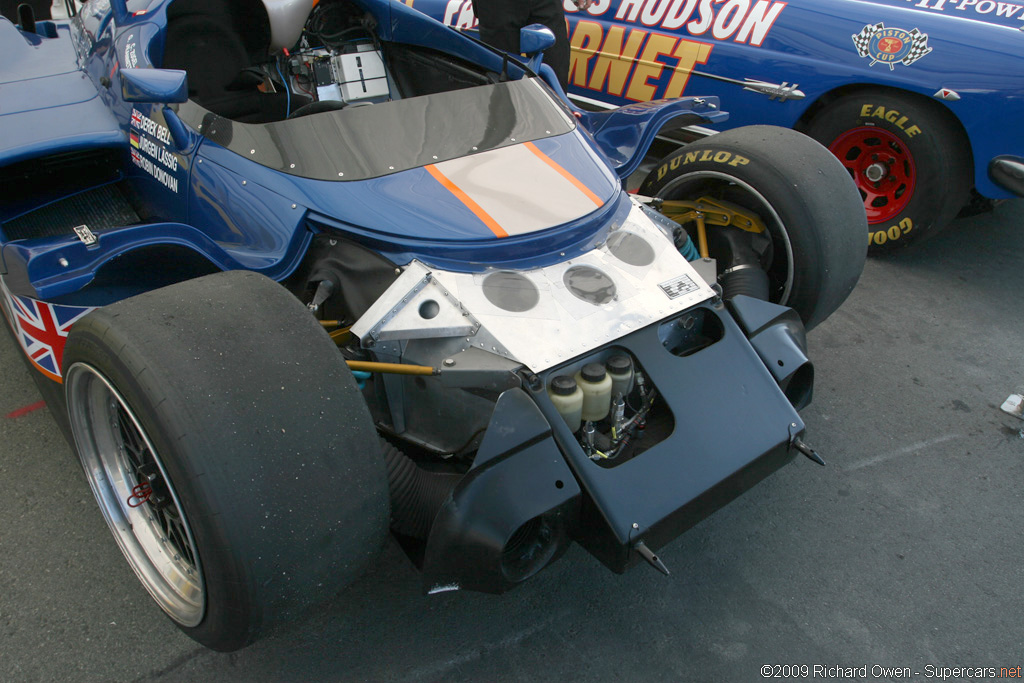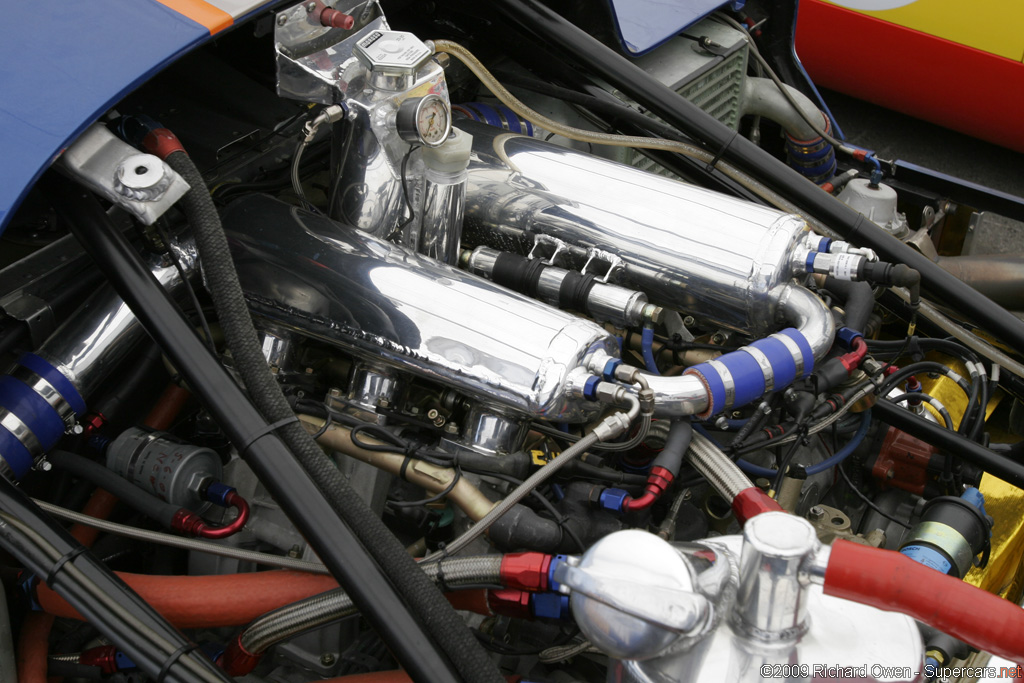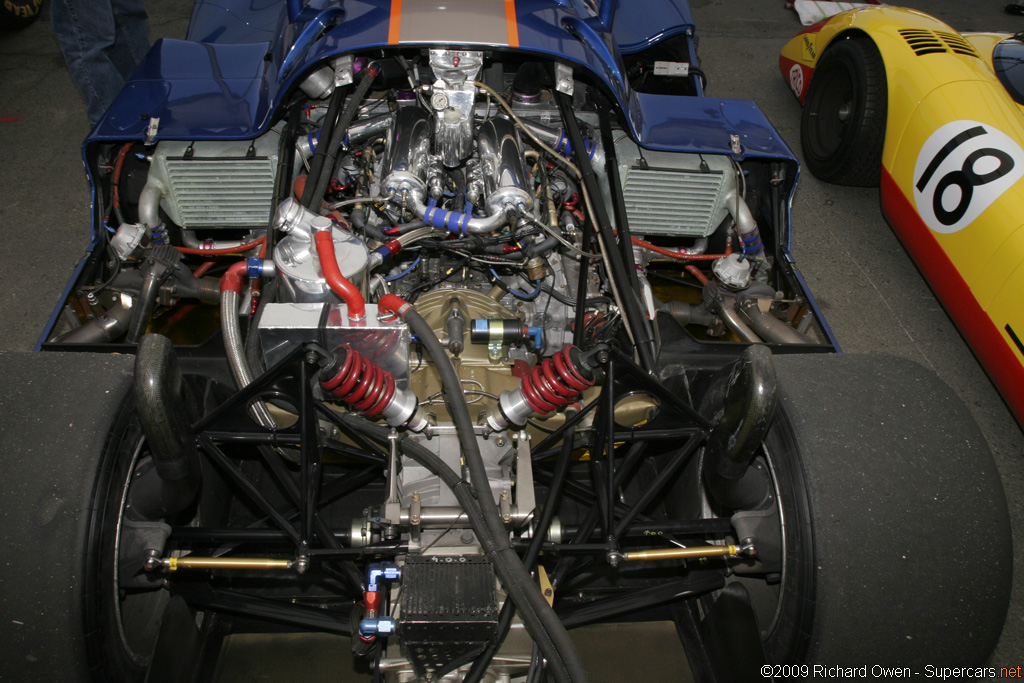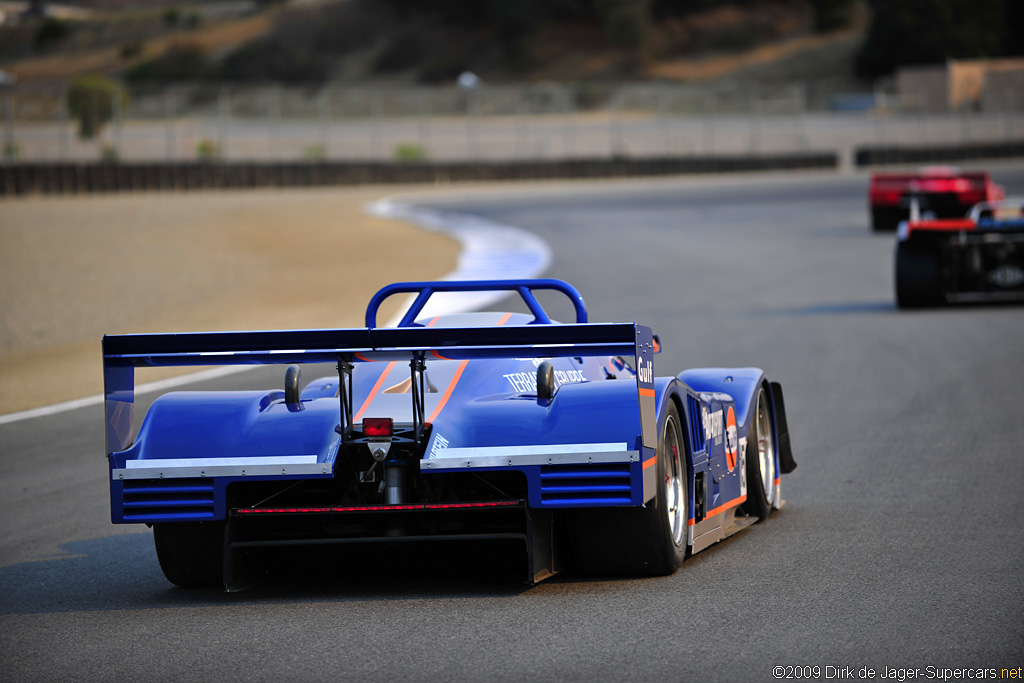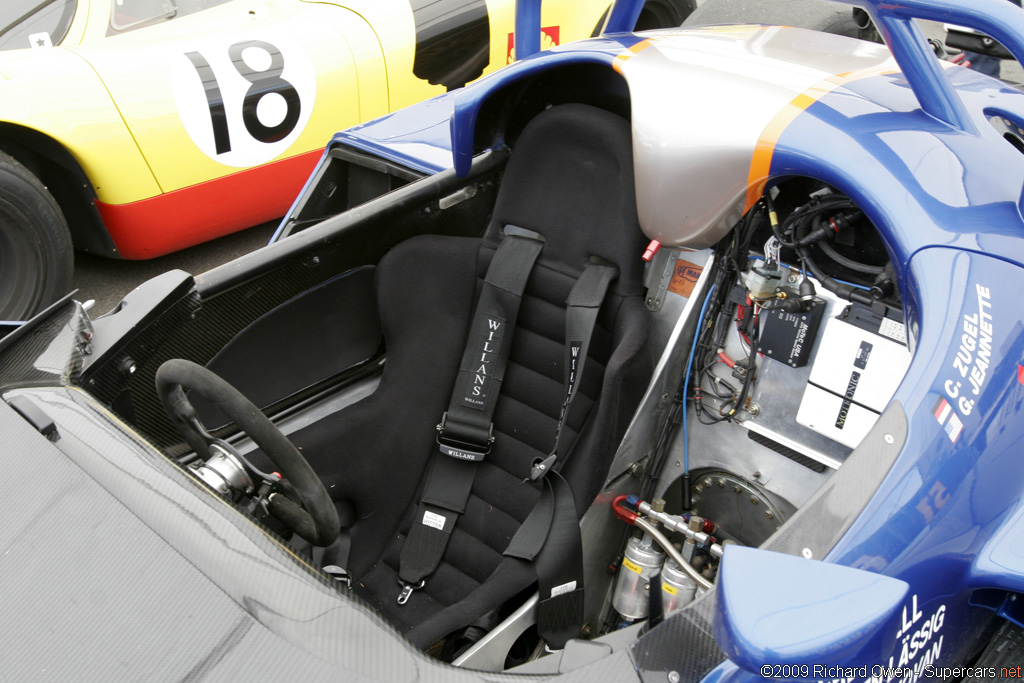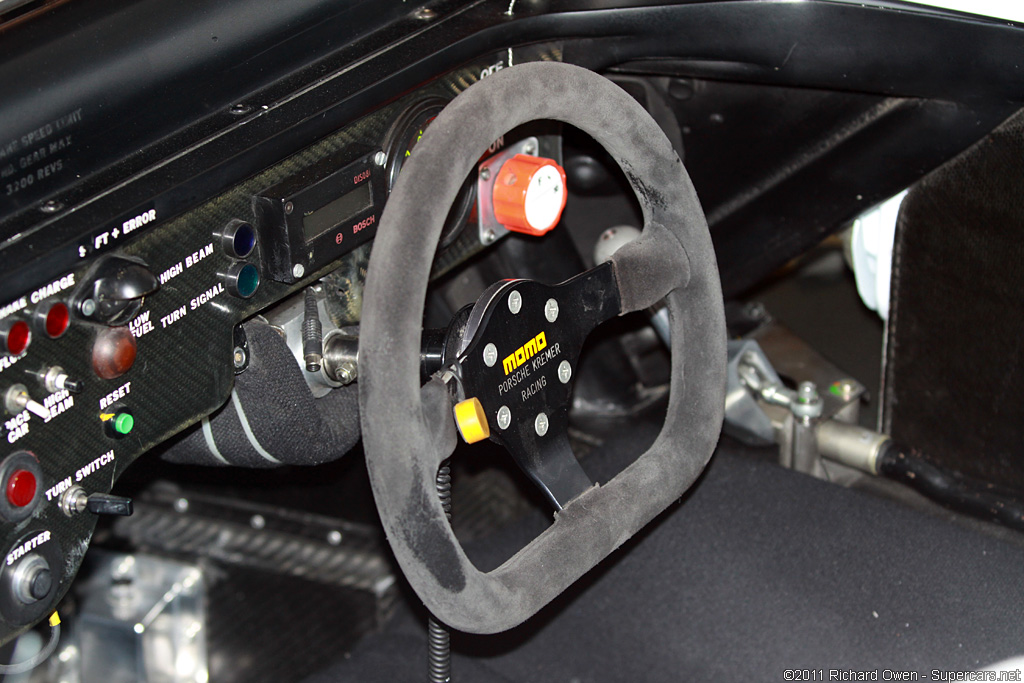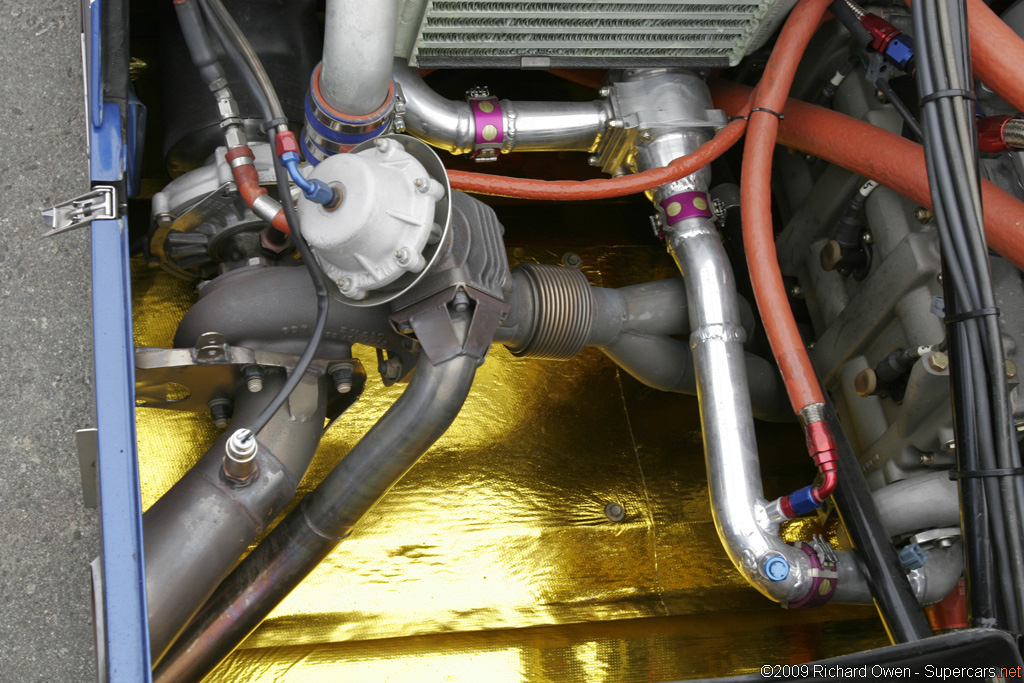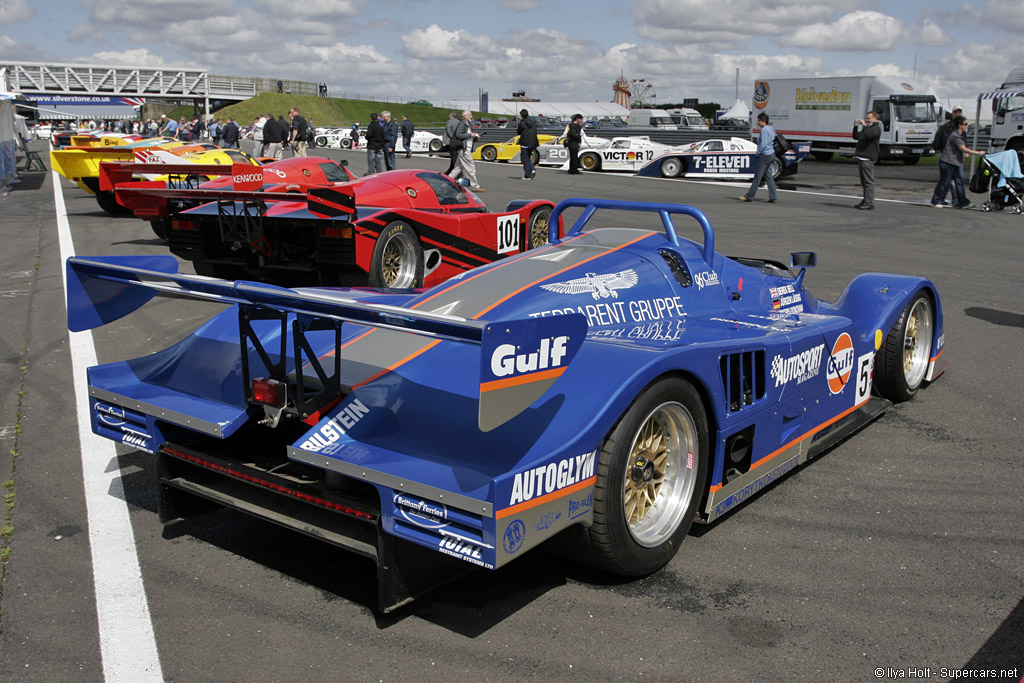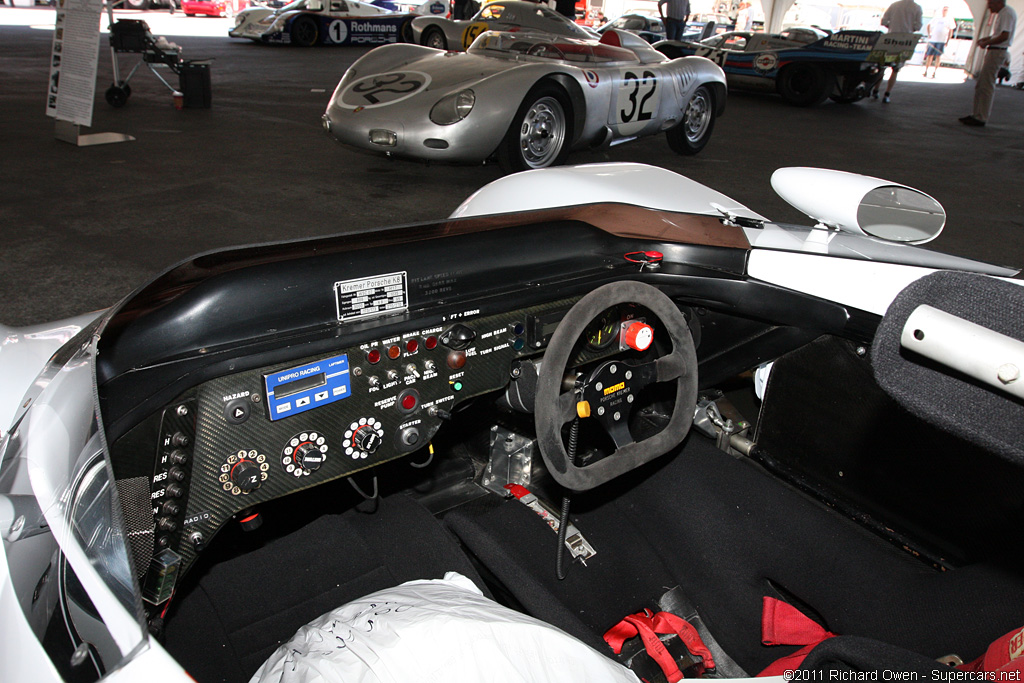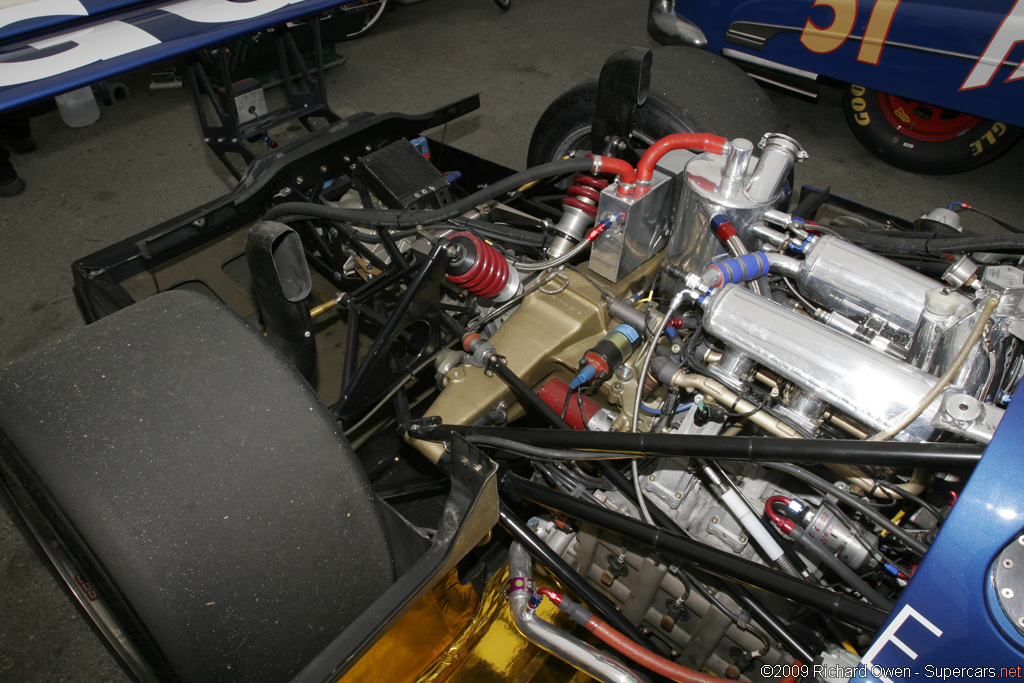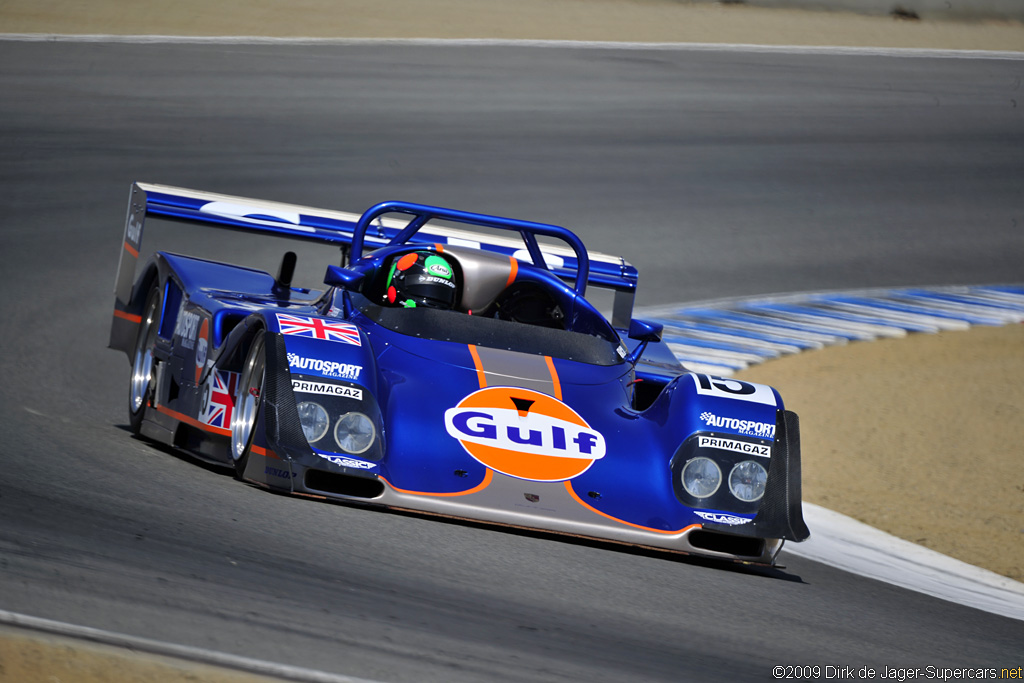1994 Kremer K8 Spyder
With sponsorship from Gulf Oil, Kremer developed the K8 specifically for the LMP1/C90 class at the 1994 24 Hours of Le Mans.
This was long after the Porsche 962 dominated Group C racing, but Kremer persisted with variants like the CK6, CK7 and this K8 Spyder.
It debuted at the 1994 24 Hours of Le Mans and reintroduced open cockpits to the event. Furthermore it was one of the very last cars Derek Bell would race professionally.
The K8 was a direct evolution of the CK7 Spyder which ran the Interserie. These featured no doors, a more central driving position and a 900 bhp engine.
The Spyder had no windscreen and was much more radical in development than anything allowed in the World Sports Car Championship.
By 1994, the rules for IMSA and Le Mans opened the door for a variant of the CK7 Spyder called the K8. The project was conceived by Project 100’s Managing Director Stuart Radnofsky. Project 100 had fielded Kremer cars in the preceding years, but Stuart Radnofsky convinced Gulf Oil UK’s marketing team to sponsor ‘The Return of a Legend’ and Derek Bell was slated as a primary driver.
Kremer began work on a Thompson-built 962 with an aluminum honeycomb and carbon-fiber monocoque. Erwin Kremer designed and the new body which was executed by Sepp and Roy Korytko in Kevlar-reinforced carbon-fiber. To accommodate the new rules, a two-seat configuration had to be revived from the old 962 and a small windscreen had to be fitted. Furthermore a roll bar had to be fitted.
Power was supplied by Porsche’s water-cooled 935-series Boxer-6 with twin KKK turbochargers fitted. Power was fed to rear wheels through Porsche’s 5-speed transaxle.
Led by team manager Graham Lorimer, Project 100 Motorsport raced the 24 Hours of Le Mans under the Gulf Oil Racing banner. As the sole open cockpit car of the race, it was driven by Derek Bell, Robin Donovan and Jürgen Lässig. Despite qualifying second on the grid they placed 6th overall behind the winning Dauer 962 Le Mans. After Le Mans the car was sold to Kremer Motorsport and passed onto Franz Konrad as a short-tail.
With the introduction of the IMSA GT Championship, the K8 was eligible for running the series debut event at Daytona. Kremer built up a second K8 for drivers Giovanni Lavaggi, Jürgen Lässig, Marco Werner, and Christophe Bouchut. They won the 24-hour event outright, but couldn’t repeat the victory at the 12 Hours of Sebring.
For the 1995 Le Mans race both K8s contested the event. Again the top team placed sixth overall. The same cars were tried again at the 1996 running, but neither failed to finish.
Despite the average results, Kremer persisted with the cars in events like the International Sports Racing Series. They won the 1000km Monza event, and continued through to 1999 until the cars were replaced by the Lola B98/10.
In 1999, the first car, chassis 001 was repurchased by Project 100’s chairman and restored into its 1994 configuration. This involved rebuilding the cars long tail and replica livery by experts Lansbury and Haywood. In recent times it was auctioned by Coys at their 2006 Excellence of Porsche sale with an estimate of £275000-£300000.
1994 Kremer K8 Spyder Gallery
In Detail
| type | Racing Car |
| released at | 1994 24 Hours of Le Mans |
| built at | Cologne, Germany |
| body stylist | Erwin Kremer |
| coachbuilder | Sepp and Roy Korytko |
| engineers | Erwin Kremer |
| production | 2 |
| engine | Type 935/76 Flat-6 |
| position | Mid, Longitudinal |
| aspiration | Twin Turbochargers |
| block material | Aluminum Alloy |
| valvetrain | DOHC 4 Valves per Cyl |
| fuel feed | Bosch Electronic Injection |
| displacement | 2994 cc / 182.71 in³ |
| bore | 95 mm / 3.7 in |
| stroke | 70.4 mm / 2.8 in |
| compression | 9.5:1 |
| power | 395.2 kw / 530 bhp |
| specific output | 177.02 bhp per litre |
| body / frame | Kevlar-reinforced Carbon Fiber over Carbon Fiber Tub |
| driven wheels | RWD |
| steering | Rack & Pinion |
| f suspension | Double Wishbones |
| transmission | Porsche 5-Speed Manual |
Auction Sales History
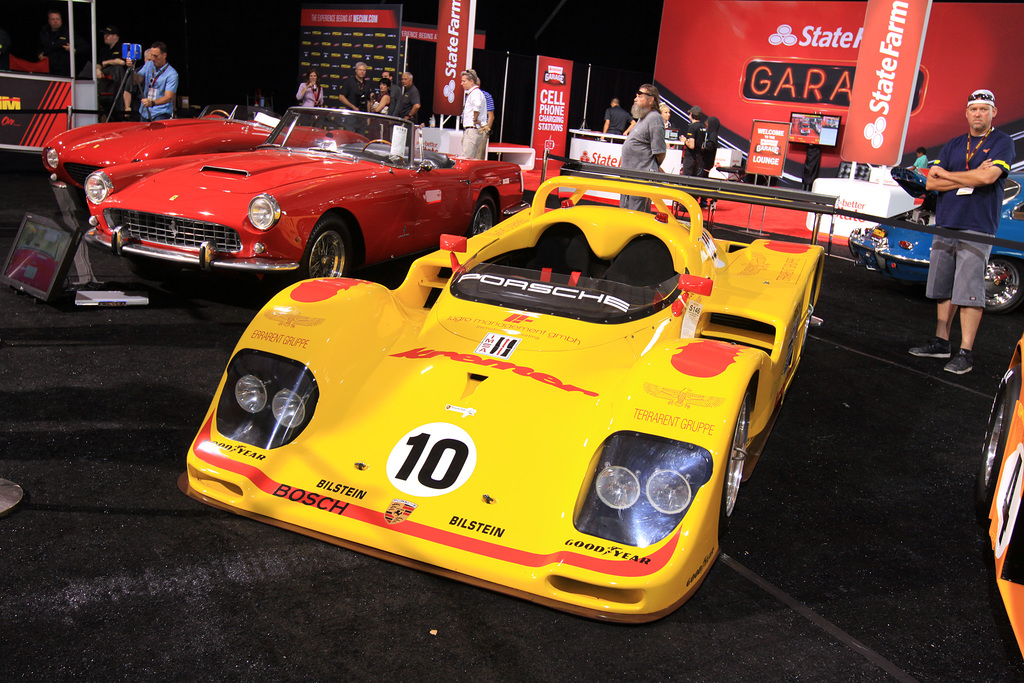
Auction Source: Monterey 2014 by Mecum Auctions


